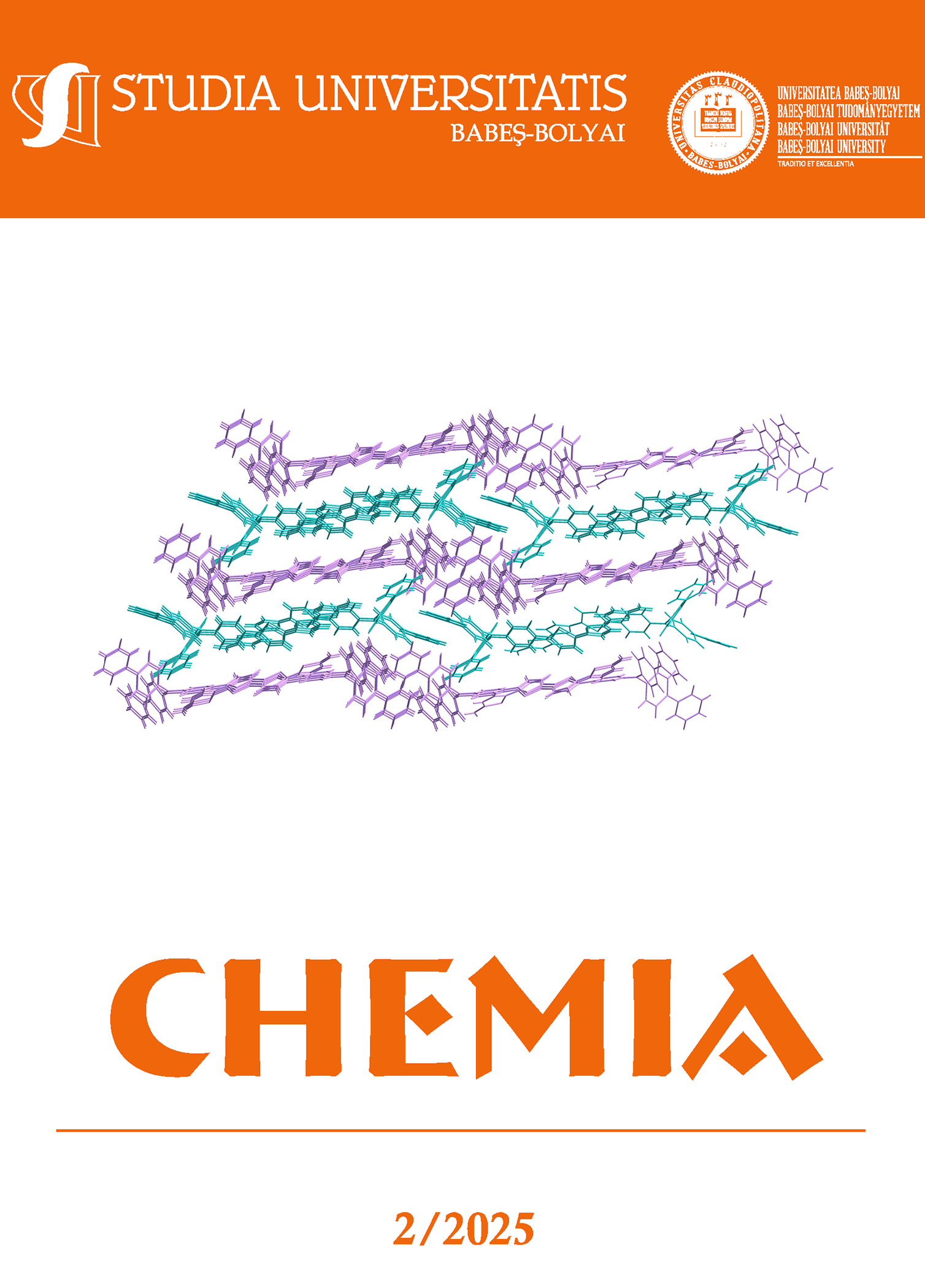PHYTOCHEMICAL CHARACTERIZATION AND BIOACTIVITY ASSESSMENT OF AETHIONEMA SCHISTOSUM WITH A FOCUS ON ENZYME INHIBITION AND ANTIOXIDANT POTENTIAL
DOI:
https://doi.org/10.24193/subbchem.2025.2.05Keywords:
Antidiabetic, Antioxidant, Aethionema schistosum, Reverse phase-HPLCAbstract
The study examines the antioxidant, antidiabetic, antihyperlipidemic, and antiobesity properties of the 80% methanol extract prepared from the aerial parts of Aethionema schistosum, a plant widely distributed in certain regions. The extract was evaluated in vitro for its inhibitory effects on α-glucosidase (antidiabetic), α-amylase (antidiabetic), pancreatic lipase (antiobesity), and pancreatic cholesterol esterase (antihyperlipidemic) enzymes. It exhibited moderate α-glucosidase inhibition (99.15±0.04%) compared to acarbose (56.94±3.88%). The DPPH radical scavenging activity of the extract at a concentration of 2 mg/ml was measured at 80.50±1.23%. This value is considered close to the inhibitory effect of ascorbic acid, which was recorded at 90.60±0.29% at the same concentration. The extract's total phenol (74.73±4.76 mg GAE/g) and flavonoid (42.80±2.25 mg QE/g) contents were measured, and chlorogenic acid was identified as a major compound via HPLC. This is the first study to analyze the phytochemical composition and enzyme inhibitory effects of A. schistosum. Further research is needed to isolate its bioactive compounds and assess its therapeutic potential through diverse in vitro and in vivo models, highlighting its potential in drug discovery efforts.
References
[1] A. Franzke; M. A. Lysak; I. A. Al-Shehbaz; M. A. Koch; K. Mummenhoff, Trends Plant Sci., 2011, 16(2), 108-116.
[2] M. C. Karaismailoğlu, Caryologia, 2018, 71(2), 128-132.
[3] H.N. Gök; N. Orhan; B. Özüpek; S. Pekacar; Ş.N. Selvi; D.D. Orhan, Iran. J. Pharm. Res., 2021, 20 (3): 441-455.
[4] H. Akkaya; S. Çelik, FÜ Sağ. Bil. Vet. Derg, 2010, 24(1), 5-10.
[5] J. B. Cole; J. C. Florez, Nat. Rev. Nephrol., 2020, 16(7), 377-390.
[6] F.D. Goffman; W. Thies; L. Velasco, Phytochem., 1999, 50, 793–798.
[7] A. L. Molan; A. M. Faraj A. S.; Mahdy, J Phytopharmacol, 2012, 2(2), 224-233.
[8] A. Duran; N. Uslu; B. Dogan; M. Ozcan; M. Çelik, J. Agroaliment. Processes Technol., 2015, 21(2), 136-141.
[9] R. Aliyazicioglu; O. E. Eyupoglu; U. Ozgen; S. A. Karaoglu, Chem. Nat. Compd., 2017, 53, 379-380.
[10] A. Demirpolat, EJOSAT, 2022, 37, pp. 1-7.
[11] G. Oboh; A. O. Ademosun; P. O. Ayeni; O. S. Omojokun; F. Bello, Comp Clin Path, 2015, 24, 1103-1110.
[12] Y. Zheng; W. Yang; W. Sun; S. Chen; D. Liu; X. Kong; J. Tian; X. Ye, 2020, J. Funct. Foods, 64, 103587.
[13] S. Panda; A. Kar, 2007, Biofactors, 31(3‐4), 201-210.
[14] P. M. Aja; J. N. Awoke; P. C. Agu; A. E. Adegboyega; E. M. Ezeh; I. O. Igwenyi; O. U. Orji; O. G. Ani; B. A. Ale; U. A. Ibiam, 2022, JGEB, 20(1), 84.
[15] İ. Gulcin; S. H. Alwasel, Process,2023, 11(8), 2248.
[16] Z. Menekşe; B. Marangoz; S. Kahraman, KFBD, 2021, 11(2), 340-354.
[17] B. Özüpek; S. Pekacar; D. D. Orhan, KSÜ Tar Doga Derg., 2024, 27(1), 26-37.
[18] M. Çavuşoğlu; M. Akdeniz; İ. Yener; H. Alkan; A. Ertaş, DOFEBD, 2024, 6(2), 24-37.
[19] K. Özcan; T. Acet, KFBD, 2024, 14(2), 982-996.
[20] H. N. Gök; S. Bulut; D. D. Orhan, J. Fac. Pharm. Ankara, 2023, 47(2), 349-359.
[21] B. Özüpek; S. Pekacar; D. D. Orhan, FABAD J. Pharm. Sci., 2023, 48(1), 125-138. doi:10.55262/fabadeczacilik.1175781.
[22] M. Zor; S. Pekacar; D. D. Orhan, J. Fac. Pharm. Ankara, 2022, 46(1), 114-128. doi:10.33483/jfpau.1018949.
[23] Y. Çelik, Anadolu Tıbbı Dergisi, 2023, 2(2),13-17.
Downloads
Published
How to Cite
Issue
Section
License
Copyright (c) 2025 Studia Universitatis Babeș-Bolyai Chemia

This work is licensed under a Creative Commons Attribution-NonCommercial-NoDerivatives 4.0 International License.



